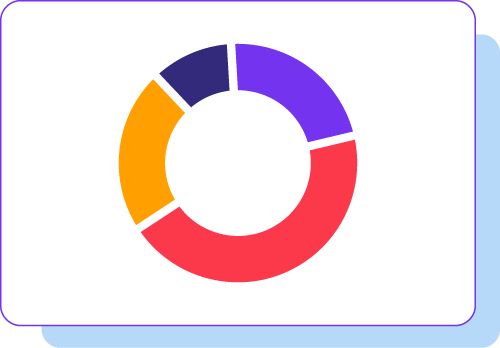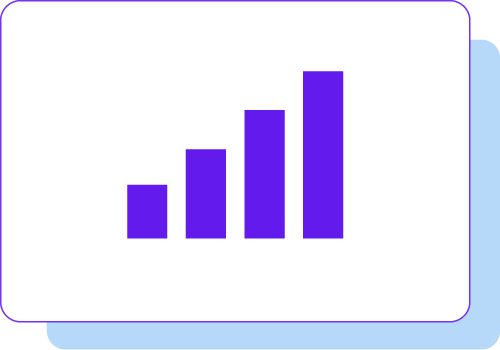In today’s tech-filled world, people use their phones, social media, and other smart gadgets to learn about products and services. They want to connect with businesses anytime and anywhere. Multichannel marketing helps companies to talk to customers in different ways, making sure the brand message is the same across all platforms.
Besides, Customers usually use more than one device or platform before they buy anything. A good multichannel plan means sharing the same message on all platforms. With the help of artificial intelligence, businesses can understand their customers better by looking at a lot of customer data in real-time. This helps the creative team make content that matches what the customer wants.
Thus, If you’re new to multichannel marketing or want to improve your current strategy, it’s good to know what multichannel marketing is and how to use the right tools to understand it better. By knowing how to market across different platforms, you can make the buying process easier for your customers and improve your business results.
Understanding Multichannel Marketing
Multichannel marketing is like being a friend who knows just the right way to talk to someone. It’s about reaching out to customers in different ways that fit their way of living. These ways can be direct or indirect and can use various things like:
- Websites
- Print catalogs
- In-store Messages
- Social media
- Targeted ads
- Text messages.
Therefore, By using many ways to connect, businesses and marketers can draw in better potential customers and make more sales. When you connect with customers in ways that fit their lives, likes, and needs, they are more likely to buy something. Multichannel marketing helps you adjust your way of connecting to meet their needs and increase your chances of doing well.
Exploring the Pros and Cons of Multichannel Marketing
Multichannel marketing has its challenges and benefits. It means using many platforms and touchpoints to create consistent brand experiences. Also this approach has lots of advantages. However, it can also be tricky to manage campaigns across multiple platforms all at once, which can make creative production a bit challenging.
The Advantages of Multichannel Marketing
The impact of utilizing multiple marketing channels is undeniable, significantly boosting your marketing strategy’s effectiveness. Here’s a breakdown of how it operates:
Reaching more people: By using a multichannel marketing plan, we can touch base with a larger group of people. Different channels appeal to different people, meaning we can spread our brand to more potential customers.
Tailoring your messages: Multichannel marketing lets us adjust our messages to fit what each customer likes. Using customer data, we can make campaigns that really speak to each person, increasing our chances of them responding positively.
Keeping a consistent feel: Customers expect the same feel when they interact with our brand on different channels. Multichannel marketing makes sure our tone and message stay the same, giving a smooth and unified experience for customers.
Making decisions with data: Multichannel marketing gives us a lot of data that we can break down to draw helpful conclusions. Also, By understanding customer behavior and trends from different channels, we can make informed decisions to make our campaigns better and plan for future projects.
Overcoming the Challenges of Multichannel Marketing
Multichannel marketing comes with its own set of challenges that businesses need to tackle. Here are some of the common hurdles and how to address them:
Handling many channels: Digital marketing is like fishing in a big ocean with many fishing spots. Each spot is a different social media platform or digital channel. Also, It can be hard to know which spot is the best for catching your ‘fish’ – your customers. You need to pick your spots carefully and use your time and money wisely to get the best results.
Keeping your brand steady: Imagine your brand is a superhero. It needs to have the same look, voice, and mission, whether it’s in a movie, comic, or video game. If it doesn’t, the fans – your customers – may get confused. They might stop being fans! So, plan well, set clear rules about your brand, and make sure everyone in your team knows them.
Merging Your Information: Multichannel marketing gives you a lot of data from different places. But, it might be tricky to put it all together. Using high-tech tools for analyzing data and systems for managing relationships with customers can make this easier.
Why Multichannel Marketing Matters in 2023
Today, there are a lot of ways to talk to our customers. Using many ways, or “multichannel marketing”, helps you build relationships, find new customers, and sell more. This strategy really works.
Besides, the fact that more marketers are using many ways to reach customers shows how important it is. Here’s why using many ways to reach customers is important for your business:
Reaching out to New Clients: Through a broad spread of marketing channels, you can connect with new clients who are using diverse platforms.
Keeping Current Clients Engaged: By tapping into various channels, you can keep your clients engaged and maintain their interest in your brand.
Knowing Your Audience: Multichannel marketing lets you learn about your clients’ likes, dislikes, and needs, helping you to shape your marketing approach to meet their preferences.
Consequently, a marketing strategy that taps into multiple channels is key because it connects with customers in their comfort zone.
Exploring Multichannel Marketing: Key Components
As a business, there’s a whole world of marketing options out there for you. Each one targets a specific group of people and helps you meet different goals. Say, you’re in the business-to-business services you might want to start conversations with key players on LinkedIn. Or maybe you’re in fashion platforms like Instagram or Pinterest can help your styles catch a lot of eyes.
Also, creating a multichannel marketing plan means figuring out which of these options will get you to your goals. Each channel has something unique to offer, and knowing these benefits is a big help. You can use data about your audience and the results you’re seeing to pinpoint the best options for you.
Now, let’s dive into some top marketing options for your multichannel approach.
1. Online Marketing Avenues
In today’s digital age, your customers are more connected than ever. With roughly half of the world’s population, nearly 3.9 billion individuals, actively using email, and a staggering 3.5 billion Google searches happening each day, it’s clear that the internet is a busy place.
Therefore, leveraging online marketing channels can significantly boost your business. Key strategies include building a solid web presence, creating quality content, sending out engaging email newsletters, launching paid search ads, and designing eye-catching display ads.
2. Social Media Marketing Channels
Social media platforms have reshaped the way we communicate and engage, providing businesses with a unique opportunity to interact with customers. As of 2020, over 3.6 billion people globally were active on at least one social media platform, a number projected to surge to 4.41 billion by 2025.
Therefore, harnessing the power of social media marketing channels opens up a world of opportunities. Platforms such as Facebook, Instagram, TikTok, Twitter, and YouTube can bridge the gap between businesses and consumers. Also, the added benefit is that these platforms allow you to fine-tune your audience, ensuring your ads and content reach the right people, making your marketing campaigns highly targeted.
3. Channels for Mass Media Marketing.
Even with the growing number of people cutting the cable cord, mass media marketing channels remain potent tools for businesses. Besides, What makes mass media attractive is its ability to target specific regions or markets, helping businesses connect with local customers or achieve broad coverage.
But remember, mass media marketing doesn’t stop at traditional TV and radio. Innovative options like internet radio stations, podcasts, and more form part of this broad category.
4. Paper-based and Fixed Media Channels.
Paper-based and fixed media channels use print or visual elements to engage customers. Businesses can deploy these channels on a grand scale or in various shapes. Also, This category encompasses direct mail, flyers, billboards, magazine ads, newspaper ads, and brochures. And they work.
Likewise, these channels offer unique benefits that digital platforms might not. Print advertising, for instance, enables focused outreach to certain demographics. Newspapers and magazines provide insights about their readers, and billboards are seen by specific groups. But be aware, it might be tough to customize content and track user data with print campaigns.
Expert Advice: Tips for Multichannel Marketing in 2023
Embarking on a multichannel marketing journey? There are some crucial things to be mindful of. To start, it’s essential to really know your customers and tailor content that resonates with them on each platform. Also, connect your channels smartly and ensure your brand message is reaching the right audiences, consistently and effectively.
Moreover, to ace multichannel marketing, understanding your customers is paramount. Treat them to a seamless experience, no matter the platform they choose. Select the best channels that your audience frequents—this could be social media, websites, or even traditional print media. Lastly, by leveraging analytics and consumer data, you can fine-tune your strategy and enhance your content on various platforms.
Now, let’s dive into the steps you should follow to implement a winning multichannel marketing strategy.
1. Create customer personas.
Understanding your customer is pivotal in marketing. This extends beyond basic demographics like age and gender and includes their interests, habits, challenges, and shopping preferences. Let’s visualize this with an example. Imagine an online athleisure wear shop that has a typical customer of a single, forty-something woman, whom we’ll name Sara. Sara earns around $85,000 annually and enjoys active pastimes such as barre classes, as well as blogging and dining out. She frequently shops at places like GymShark and often seeks leggings suitable for her workouts.
2. Finding the Right Marketing Channels for Your Customers.
Once you’ve identified and characterized your customers, it’s time to determine the best ways to reach them. This involves researching your competitors and analyzing relevant data. Additionally, considering the fact that most adults check their phones around 100 times daily, text marketing can be a powerful tool in your multichannel marketing approach. Just remember, it’s important to comply with text messaging laws and have a proper opt-in procedure.
3. Establishing channel or campaign goals.
In every multichannel marketing strategy, it is essential to have well-defined goals. These goals can include objectives like increasing your email newsletter database by 20%, achieving a 5% growth in online sales, gaining a 15% increase in followers on Facebook, or boosting sales of a specific product or service.
Similarly, having a clear and defined goal for your multichannel marketing campaign allows you to create compelling calls to action for consumers. It also helps guide them through the sales funnel, ultimately driving conversions.
4. Simplifying content development with programmatic design and AI.
Multichannel marketing gets a big boost with a mix of smart design and AI. Personal touches are a game changer in marketing, and AI helps us do just that. It lets us understand every customer’s likes and dislikes, and changes the content to match their taste.
Also, when it comes to different marketing channels, each one has its own style. With AI and smart design, we don’t have to worry about it. Be it pictures for social media or content for websites, AI adjusts everything to look just right.
Likewise, another exciting feature is that AI and smart design let us switch up the content based on real-time data. It looks at everything – what customers are buying, what they are clicking on, and changes the content to match their behavior.
5. Creating an integrated creative approval workflow for multichannel marketing campaigns.
A quick and smooth process is key to getting your multichannel marketing campaigns off the ground. One way to do this is by cutting down on lengthy email conversations, speeding up approvals, and getting your campaign out there faster. Also, it’s essential that everyone involved in reviewing your campaign knows exactly what they’re looking at.
Besides, In the world of multichannel marketing, we’re often using many platforms and channels to create our content. To make life easier, we can integrate production systems right into our workflow. This means we can easily manage how we create, review, and approve content. By connecting all our creative tools and systems, we’re able to work together better as a team, and ensure we’re producing the best quality content, faster.
6. Having a data analytics program.
Implementing a comprehensive data analytics program for multichannel marketing campaigns is crucial for measuring outcomes and optimizing strategies. Here are some key considerations:
6.1. Using smart design and AI to understand your audience:
Smart design and AI tools can help you understand your audience better. Think of it as testing different versions of the same message to see what your customers prefer. AI tools help analyze these tests and tell you what’s working. This can help you make your content more engaging and effective across all your marketing channels.
6.2. Understanding data from multiple sources:
To really get a handle on how your marketing is doing, you need to look at data from different places. This could be data from your website, your social media pages, or your email campaigns. By looking at all this data together, you can see patterns, learn what your audience likes, and plan your future content better.
6.3. Keeping track of your marketing performance:
It’s important to have a system to track how your marketing campaigns are doing regularly. Set clear goals for your campaigns and track them regularly. Besides, this will help you see if you’re making progress, spot things that you can improve, and make decisions based on facts. With a good system for tracking and analyzing data, you’ll be able to understand your marketing campaigns better and keep improving your performance.
7. Continuous Strategy Evaluation for Multichannel Success.
It’s super important to keep looking at your multichannel marketing plan to make sure it’s working well. Keep an eye on how your campaigns are doing and think about what’s working and what could be better. Remember to keep thinking about who your customers are and change your plan if you need to so you can connect better with them.
Also, Choose the best channels and use your resources wisely based on what the numbers tell you. Take the lessons you learn from checking your plan to fine-tune it, make smart choices, and stay one step ahead of your competitors. Therefore, by always checking and adjusting your multichannel marketing methods, you can make sure you’re doing the best job, reaching your goals, and using the right ways to get the best results.
Elevate Your Multichannel Marketing Game for 2023
Elevate your multichannel marketing game for 2023 and watch your business prosper. Multichannel marketing unlocks numerous possibilities, giving you the chance to engage with customers and potential clients across a wide range of online and offline platforms. It makes sure your message reaches your target audience, no matter where they are.
Besides, grasping multichannel marketing and putting together a comprehensive campaign that spans multiple platforms can catapult your business forward.
Also, In such a fast-paced environment, agencies, brands, and marketers need the right tools to keep an eye on emerging trends and assess their strategy. Getting everyone on the same page – from channel strategy and content creation to data analysis – sets up a beneficial feedback loop that drives your multichannel marketing efforts to success.
Leverage your Multichannel marketing with Amplibiz.io
Finally, at Amplibiz.io, we specialize in multichannel marketing services. We understand the critical role of a robust multichannel strategy in today’s digital world. Our expert team is equipped with the necessary skills and experience to navigate through various platforms, ensuring your brand message reaches the right audience at the right time. Capitalize on our multichannel marketing expertise to drive customer engagement, boost your brand visibility, and enhance your return on marketing investment. Trust Amplibiz.io to craft a comprehensive multichannel strategy tailored to your business needs











